Orchids are considered one of the largest and oldest plant families on the planet. Orchid flowers are one of the most fascinating and captivating flowers on earth. Known to symbolize luxury, love, and beauty. It carries a certain mystique and undeniable charm that delight anyone who receives one of these plants.
How to Care for an Orchid Plant
Orchids are easy to care for even in the winter. Give them indirect light, don’t water them too much, and keep them away from vents, and they can last for years. Watch the following video for a comprehensive guide to orchid care:
Types of Orchids
Orchids are usually grouped into two broad categories that characterize their growth habits.
1. Monopodial orchids
Monopodial orchids have a single, upright stem, with leaves arranged opposite each other along the stem. Significantly, monopodial orchids don’t have pseudobulbs. Any water reserves they have are in their roots and leaves. Orchids with this growth habit include:
Phalaenopsis
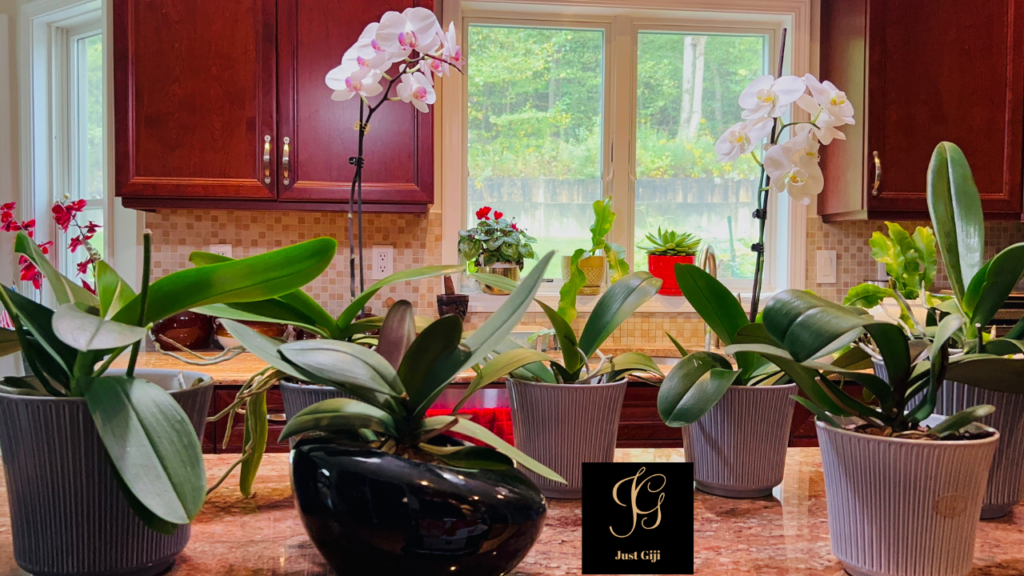
- Phalaenopsis, also known as moth orchids, is a genus of about seventy species of plants in the family Orchidaceae. Orchids in this genus are with long, coarse roots, short, leafy stems and long-lasting, flat flowers arranged in a flowering stem that often branches near the end. And they are one of the most popular orchids because they are easy to grow and care for as a houseplant.
- Vandas, Warm-growing orchids from tropical forests like Vanda.
Vanda Orchids

Phalaenopsis or Moth Orchids are more common than the Vanda Orchid, because the way they adapt indoors, verses the Vandas are grown in a warm tropical climate outside hanging from a tree or broken filtered line. So if you are living in a place where there is extreme winter, it’s impossible to grow them unless you have a plant room or a greenhouse.
2. Sympodial orchids
Sympodial orchids are characterized by their multiple root systems. “Sym” can be translated from Greek into English as “with,” “joint,” “together” and “sharing.” Many sympodial orchids form pseudobulbs, which are swollen shoots that store water and nutrients to help the plant survive periods of prolonged drought. Sympodial orchids include:
- Cattleya
- Cymbidium
- Dendrobium
- Oncidium
Best Growing Conditions For Orchids
If the orchid has fat pseudobulbs, it should be watered sparingly, and should be grown on coarse chunks of bark or lava rock. If the orchid has no pseudobulbs, it may require more frequent watering, or should be grown in a more moisture-retentive growing medium, such as sphagnum moss. Watch the above video for clues to its preferences for light, water, and growing medium.
How to Get Orchids to Rebloom
Place your plant in a spot that receives bright, but indirect light and complete darkness at night. And keep your plant at a standard room temperature of between 65 and 85°F. Rotate your orchid throughout the growing cycle so it receives light where it needs it most. Maintain regular care. During the growing and flowering season, maintain consistent watering and feeding.
Note: If the leaves are a grassy green color, the plant is getting enough light. If the leaves are a rich, dark green, the plant isn’t getting enough light.
Orchid myths and color meanings
Orchids are associated with a lot of symbolism. This elegant flower has long been linked to ideas of love, thoughtfulness, and fertility. The color you choose is believed to carry certain significance, especially when given as a gift.
- Blue: Peace, beauty, and tranquility
- White: Innocence, reverence, and humility
- Purple: Respect, admiration, and royalty
- Pink: Femininity, charm, and grace
- Yellow: Joy and friendship
- Green: Health, nature, and financial good fortune
- Orange: Pride, enthusiasm, and having fun
While this symbolism is fun to consider, the right orchid color for you will always be the one you love the most. Don’t limit your selection based on these color meanings. Instead, consider the care instructions and traits of different varieties.
Orchid Pests and Diseases
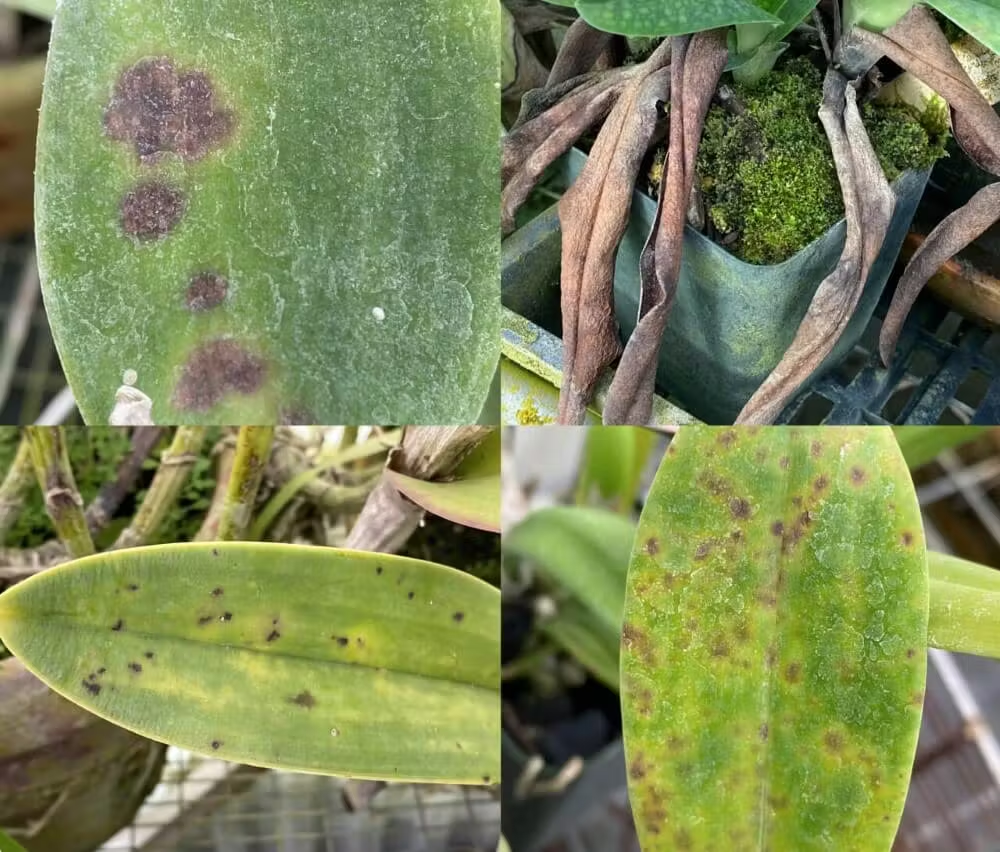
Pests
Common pests of Phalaenopsis or Moth Orchids include:
- Spider mites: These tiny, spider-like creatures can be found on the undersides of leaves. Signs of spider mites include fine webbing and yellowing leaves. To get rid of them, you can spray the plant with a mixture of horticultural oil or insecticidal soap and water.
- Mealybugs: These soft-bodied, oval-shaped insects appear as white, cottony masses on stems and leaves. They can also be found in potting medium or under potting trays. To get rid of them, you can spray or wipe down the plant with a mixture of equal parts horticulture soap or rubbing alcohol with water.
- Scale insects: These pests appear as small, oval-shaped bumps on stems and leaves. Signs of scale insects include sticky leaves and black sooty mold.
- Aphids: These small, soft-bodied insects can be green, black, or white. Signs of aphids include curling leaves and sticky residue on the foliage.
- Whiteflies: These tiny, white flying insects gather on the undersides of leaves. Signs of whiteflies include yellowing leaves and sticky residue.
Diseases
Phalaenopsis or Moth Orchids can also be affected by fungal or bacterial infections. Signs of a bacterial infection include a foul smell and discolored leaves. Signs of a fungal infection include a spotty appearance but no foul smell. To treat fungal or bacterial infections, you can move the orchid away from other plants, remove the infected area, and spray the plant with a fungicide.
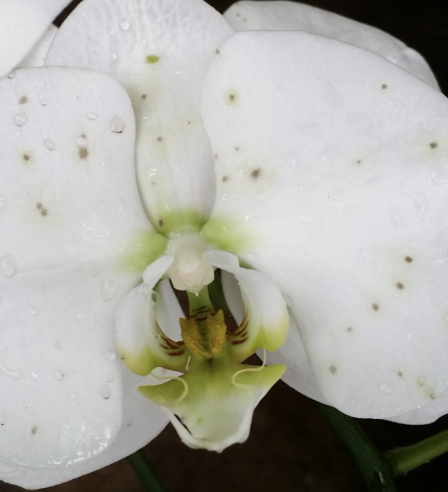
Botrytis
Botrytis is a fungal disease that causes brown, black, or gray spots on orchid flowers. Typically seen on white or light yellow/green flowers. Botrytis is caused when persistently wet, humid condition happens in cool to cold weather, most commonly in areas with poor airflow. If spotted it’s best to avoid further spread by removing flowers from the plant and in effect the growing area too.
Common Problems With Orchids
Drooping leaves
A droopy, wrinkly appearance is usually a sure sign of a watering problem and in some cases a root problem. Either way, the pot has been kept overly wet and sitting in water and has experienced root loss. Remove the potting media and determine the problem; brown and mushy roots indicate too much water, grey and shriveled roots indicate not enough water. If the plant was under watered a 5-10 minute soak in clean, warm water would help a bit. Next remove all dead or soft roots and wash the plant under tepid water, then repot in coarse mix! Water the plant thoroughly and set it out in filtered light avoiding any extreme conditions. Keep in mind, the old leaves won’t recover from the droopy appearance but the new leaves that grow will be healthy and wrinkle free.
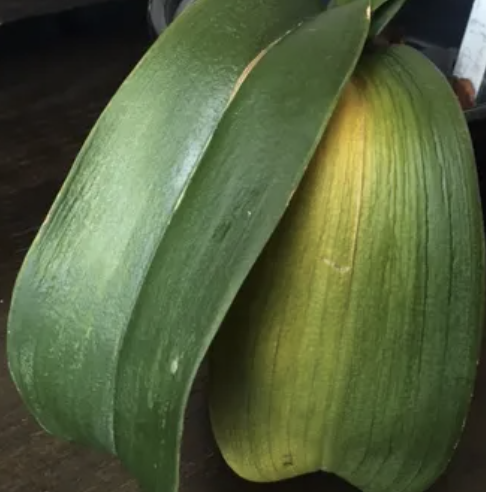
Bud Blast
The developing buds of an orchid are the most sensitive part of the plant. New orchid buds becomes yellow and shrivel before they ever open is bud blast. Bud blast can happen to any species of orchid but Phalaenopsis are usually the most common to this issue.
A sudden change in environment, a plant being left too dry, over watering, exposure to very dry/hot air (near a heating vent or fire place), exposure to cold drafts (near an a/c vent), and these are some issues for bud blast. Just avoid any possible stress to the plant and water properly. But even sometimes when everything seems right it’s very common to see the last couple of buds drop regardless of care.
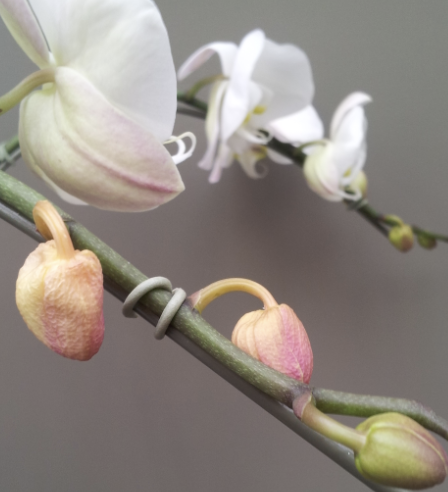
Facts About Orchids
Most tropical orchids are epiphytes, meaning they grow in the air rather than in soil. They also like to grow on things, such as tree branches/trunks. You won’t have to worry too much about soil, and instead you can make use of either Sphagnum Moss or Orchid Bark also known an Coarse. Thus please note the following facts:
- No coffee water, rice water all these are not necessary and they can’t tolerate. Remember, in tropical climate they grow on tree branches or trunks! So that clearly says, they don’t need too much of anything! Especially direct sunlight and water! Because their natural habitat is shade and tree bark!
- Watering orchids with ice cubes may seem counterintuitive because it’s a tropical plant, and generally don’t do well with freezing temperatures. However, using ice cubes to water orchids causes no harm and makes caring for these plants easier.
- Eggshells can be used as a natural fertilizer for orchids, primarily because they are a good source of calcium, potassium, sodium, and magnesium which is a vital nutrient for healthy orchid growth. Simply crush the eggshells and sprinkle them around the base of the plant to provide a slow-release of these supplement.
Beautiful video, and very useful information!! Love it. Hope I will have better luck with orchids by following your guide. Really appreciate this!!
Thank you 🙏 ☺️ And my pleasure for sharing this video!
Very useful information. Thanks for sharing 👍🥰